Dalam beberapa tahun terakhir, pesatnya perkembangan kendaraan energi baru telah meningkatkan permintaan yang lebih tinggi untuk kinerja baterai. Material anoda berbasis grafit tradisional memiliki kapasitas spesifik yang rendah dan sulit memenuhi permintaan. silikon memiliki kapasitas spesifik teoritis yang sangat tinggi, yang secara efektif dapat meningkatkan kinerja baterai. Ini memiliki potensi besar untuk dikembangkan sebagai bahan anoda. Bahan sumber silikon, morfologi partikel, dan metode pemrosesan secara signifikan memengaruhi kinerja elektroda negatif berbasis silikon.
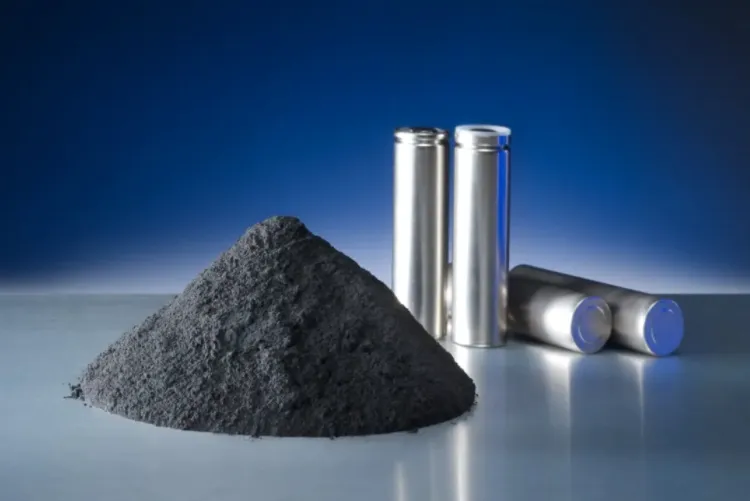
Mari kita lihat sumber silikon dari elektroda negatif berbasis silikon.
Diatomite, Zeolite, Pasir dan Sumber Mineral Silikon Lainnya
Mineral Silikon merupakan sumber silikon yang paling melimpah dan tersebar luas saat ini. Silikon terutama terdapat dalam bentuk oksida silikon dan silikat, seperti pasir, zeolit, feldspar, dan tanah liat. Mineral silikon memiliki kandungan silikon yang tinggi dan sifat-sifat seperti kekerasan tinggi, stabilitas termal, dan bahan kimia stabilitas. Beberapa mineral silikon mengandung banyak pori-pori kecil dalam struktur mikronya, sehingga memberikan luas permukaan spesifik yang besar. Hal ini membuatnya cocok untuk menyiapkan bahan anoda berbasis silikon berpori.
Diatomit
Diatomit adalah sedimen yang terbentuk dari akumulasi sisa-sisa diatom kecil dari laut purba. Diatomit tersebar luas sebagai batuan silika dengan kapasitas penyimpanan tinggi di Bumi. Komponen kimia utama dari tanah diatom adalah SiO2, dengan kandungan maksimum hingga 94%. Selain itu, diatomit mengandung sejumlah kecil pengotor logam dan bahan organik. SiO2 yang diperoleh dari tanah diatom memiliki struktur berpori yang baik. Dibandingkan dengan sumber silikon biomassa, diatomit mengandung lebih sedikit karbon, tetapi kandungan silikonnya lebih tinggi. Struktur silika menunjukkan struktur jaringan 3D yang unik dan sangat teratur. Melalui ekstraksi dan peracikan sederhana, bahan nano-silikon berpori dapat digunakan untuk menyiapkan anoda berbasis silikon.
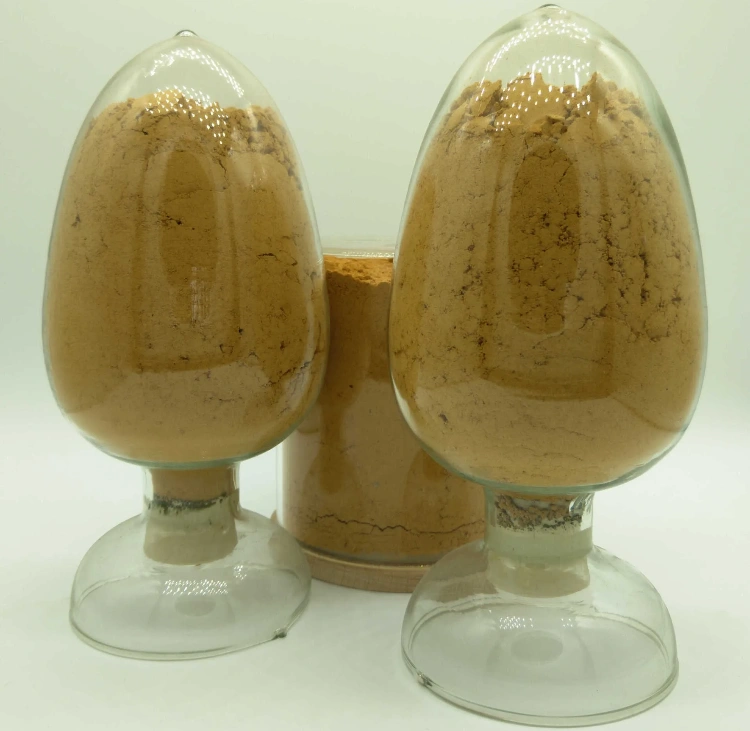
Klinoptilolite
Klinoptilolite terutama tersusun dari silikat, dengan kandungan silikon tinggi (57%–70%) dan struktur saluran mirip sangkar yang kompleks. Struktur ini bermanfaat untuk menyiapkan bahan anoda berbasis silikon yang berpori seragam. Para peneliti menggunakan penggilingan mekanis untuk membuka saluran transmisi internal klinoptilolite. Mereka kemudian menerapkan panas untuk mendorong reaksi reduksi termal magnesium, mengekstraksi silikon unsur. Selanjutnya, metode deposisi uap digunakan untuk memecahkan toluena pada permukaan nano-silikon, membentuk lapisan karbon. Ini menghasilkan struktur seperti spons dari bahan elektroda negatif berbasis silikon berpori nano. Pori-pori ini secara efektif menahan perubahan volume anoda berbasis silikon selama siklus pengisian dan pengosongan. Ini memastikan integritas mekanis material, dengan keuntungan seperti persiapan sederhana dan stabilitas siklus yang baik.
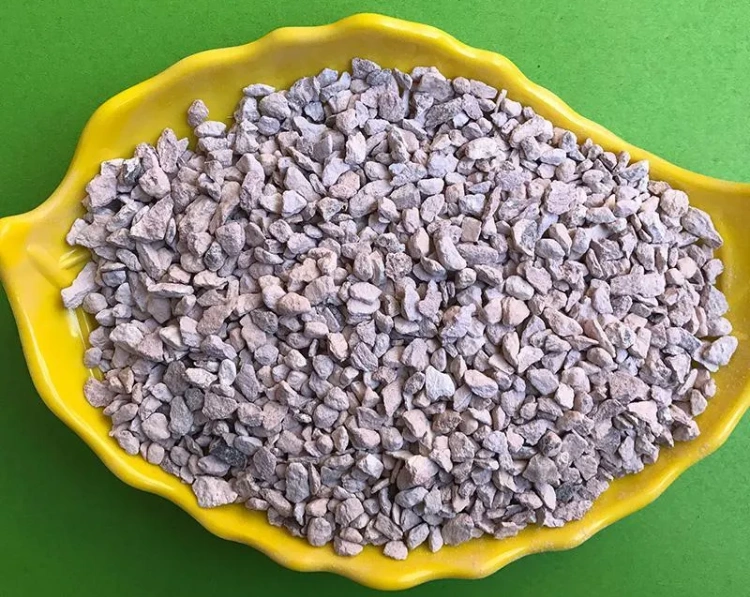
Pasir
Komponen utama pasir adalah kuarsa, yang memiliki kelebihan seperti cadangan yang melimpah, biaya rendah, dan ekstraksi yang mudah dibandingkan dengan bijih silikon lainnya. Namun, silikon dioksida dalam pasir dibentuk oleh sejumlah besar tetrahedra SiO4 yang dihubungkan melalui atom oksigen bersama, membentuk jaringan silikon-oksigen yang kuat. Struktur ini sangat stabil dan sulit digunakan. Para peneliti menggunakan NaCl untuk menyerap panas yang dihasilkan selama proses reduksi magnesium, mencegah pelelehan partikel. Nano-silikon diekstraksi dari pasir laut, dan pirolisis asetilena suhu tinggi digunakan untuk memperoleh karbon lapisan pada partikel silikon. Hal ini menghasilkan bahan anoda silikon-karbon yang dilapisi dengan baik.
Sumber Silikon Biomassa Seperti Sekam Padi dan Alang-alang
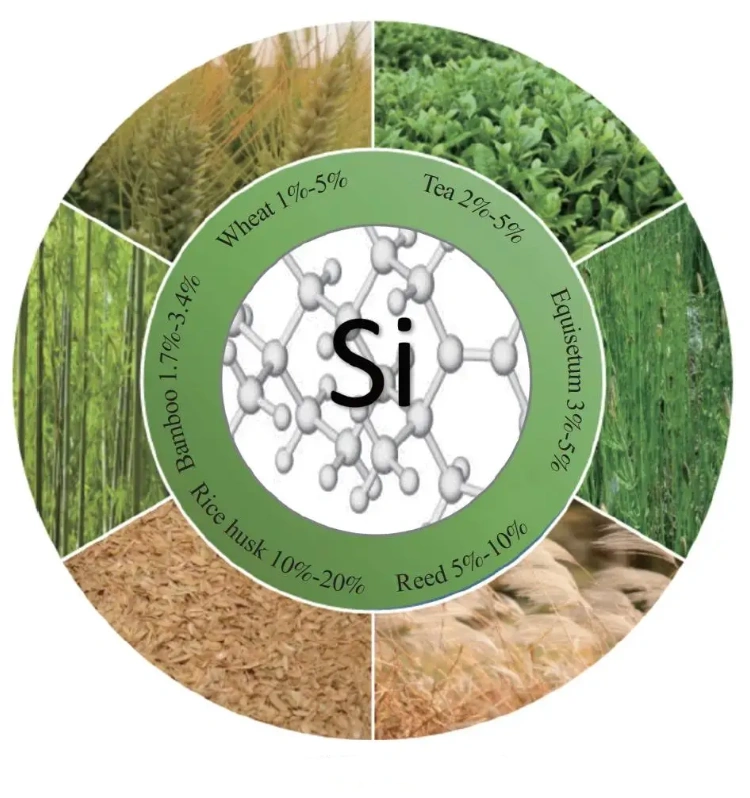
Tanaman kaya silikon meliputi: sekam padi, alang-alang, ekor kuda, daun teh, dan bambu. Kandungan silikon bervariasi di antara berbagai tanaman. Dalam biomassa, silikon terutama terdapat sebagai silika bebas di batang, kulit kayu, dan daun. Reaksi kimia digunakan untuk mengubahnya menjadi silikon berpori unsur. Ini diikuti oleh proses pelapisan karbon untuk menyiapkan bahan elektroda negatif berbasis silikon.
Silika dalam biomassa, setelah reduksi, sebagian besar dapat mempertahankan struktur berporinya. Selama persiapan anoda berbasis silikon, proses sederhana dapat mempertahankan kerangka berporinya. Ini secara efektif meningkatkan ruang internal material, mengurangi ekspansi volume silikon selama siklus pengisian dan pengosongan. Menggunakan biomassa sebagai sumber silikon untuk menyiapkan material elektroda negatif berbasis silikon memiliki keuntungan seperti ketersediaan luas dan keberlanjutan. Ini sejalan dengan konsep pengembangan rendah karbon dan ramah lingkungan saat ini, menjadikannya sumber silikon yang ideal.
Sekam padi merupakan produk sampingan dari padi, dengan lebih dari 100 juta ton diproduksi secara global setiap tahun. Meskipun komposisi sekam padi bervariasi menurut varietas dan asal, sekam padi sebagian besar terdiri dari lignin, selulosa, hemiselulosa, dan silika. Biasanya, abu yang tersisa setelah pembakaran sekam padi mencapai sekitar 20% dari massa sekam, dengan kandungan silika mencapai 87–97%. Melalui metode seperti kalsinasi, pencucian, penghilangan kotoran, dan reaksi reduksi, silikon unsur dapat diekstraksi dari sekam padi. Silika dalam sekam padi memiliki struktur berpori, dan reaksi sederhana dapat menghasilkan nanosilikon berpori 3D. Bila dikombinasikan dengan karbon organik, ini meningkatkan kinerja elektrokimia material.
Selain sekam padi, alang-alang juga merupakan bahan anoda berbasis silikon yang baik. Alang-alang memiliki silika berskala nano yang tersusun rapi dan struktur berlapis 3D seperti serpihan. Dengan menggunakan reaksi reduksi termal magnesium sederhana, silikon 3D yang sangat berpori dapat diperoleh.
Silana dan Sumber Gas Kimia Silikon Lainnya
Sumber silikon gas umumnya digunakan untuk menyiapkan anoda berbasis silikon, termasuk silana (SiH4), triklorosilana (SiHCl3), dan silikon tetraklorida (SiCl4). Sumber silikon gas ini dapat digunakan dalam teknik pengendapan uap seperti CVD untuk menyiapkan nano-silikon dalam kondisi yang sesuai. Di antara sumber-sumber tersebut, silana merupakan sumber silikon gas utama yang digunakan untuk persiapan anoda berbasis silikon. Silana, senyawa silikon-hidrogen, terutama digunakan dalam bentuk metilsilana (SiH4) untuk tujuan ini. Biasanya, metode pengendapan uap digunakan, di mana silana mengalami dekomposisi untuk menghasilkan nano-silikon yang melekat pada substrat.
Pelapisan karbon kemudian dicapai melalui penguraian gas yang mengandung karbon, menghasilkan bahan anoda silikon-karbon.
Sumber silikon gas cocok untuk menyiapkan bahan anoda silikon-karbon generasi berikutnya. Dengan memproduksi partikel nano-silikon yang lebih kecil dan modifikasi permukaan, sumber silikon gas secara efektif mengatasi masalah ekspansi volume selama penggunaan aktual. Namun, sumber silikon gas (seperti silana) sangat tidak stabil, mudah terbakar, dan beracun. Oleh karena itu, kontrol ketat terhadap suhu, tekanan, dan aliran gas diperlukan selama persiapan dan penggunaan untuk memastikan keamanan dan stabilitas. Hal ini menyebabkan persyaratan yang lebih tinggi untuk peralatan produksi, kontrol proses, dan peningkatan biaya produksi.
Limbah Silikon Fotovoltaik dan Bahan Limbah Lainnya
Silikon fotovoltaik sering kali memerlukan pemotongan dan pembentukan selama proses pembuatan, sehingga menghasilkan limbah silikon dari potongan tepi dan sudut. Dengan meluasnya penggunaan silikon fotovoltaik, produksi limbah silikon terus meningkat dari tahun ke tahun. Limbah silikon murah dan mudah didapat, dengan kemurnian yang relatif tinggi dan kandungan pengotor yang rendah. Limbah ini cocok untuk menyiapkan bahan anoda berbasis silikon.
Untuk mengatasi masalah proses persiapan yang rumit dan biaya material yang tinggi, para peneliti telah menggunakan limbah pemotongan silikon fotovoltaik industri sebagai sumber silikon. Melalui penggilingan bola berenergi tinggi, silikon direduksi menjadi ukuran skala nano. Kemudian, sukrosa digunakan sebagai sumber karbon untuk melapisi nano-silikon, menghasilkan material anoda mikrosfer Si@C. Pendekatan ini mengurangi biaya material dan menyederhanakan proses persiapan. Desain struktur pelapis membungkus nano-silikon di dalamnya, mencegah kontak langsung dengan elektrolit dan mengurangi konsumsi elektrolit. Nano-silikon mengalami fluktuasi volume di dalam bola karbon, mempertahankan kontak yang baik dengan material karbon dan memungkinkan pengangkutan ion litium yang cepat.
Kaca kuarsa daur ulang, setelah diolah, juga dapat menghasilkan bahan anoda silikon dengan kinerja siklus yang stabil. Para peneliti menggunakan pecahan kaca yang dibuang dan, melalui reduksi termal magnesium, secara langsung memperoleh jaringan interkoneksi Si. Setelah pelapisan permukaan dengan bahan karbon, bahan tersebut dirakit menjadi baterai. Pada kerapatan arus C/2, setelah 400 siklus, kapasitasnya tetap pada 1420 mAh/g. Lapisan karbon pada permukaan memiliki keterbatasan dalam membatasi ekspansi bahan silikon, yang merupakan alasan utama hilangnya kapasitas yang signifikan pada siklus awal. Namun, struktur yang dipertahankan setelah pengolahan kaca memberikan kemampuan anti-ekspansi yang sangat baik, mencapai tingkat retensi kapasitas hingga 74%.
Kesimpulan
Kesimpulannya, "silikon" dalam anoda berbasis silikon berasal dari berbagai sumber. Silikon dapat diperoleh dari mineral, tanaman, bahan limbah, dan sumber silikon gas. Dengan kemajuan teknologi, pemanfaatan sumber silikon ini menjadi lebih efisien dan berkelanjutan. Sumber silikon yang beragam ini menawarkan berbagai pilihan untuk mengembangkan bahan anoda berbasis silikon. Hal ini berpotensi mendorong pengembangan teknologi baterai berkinerja lebih tinggi.
Bubuk Epik
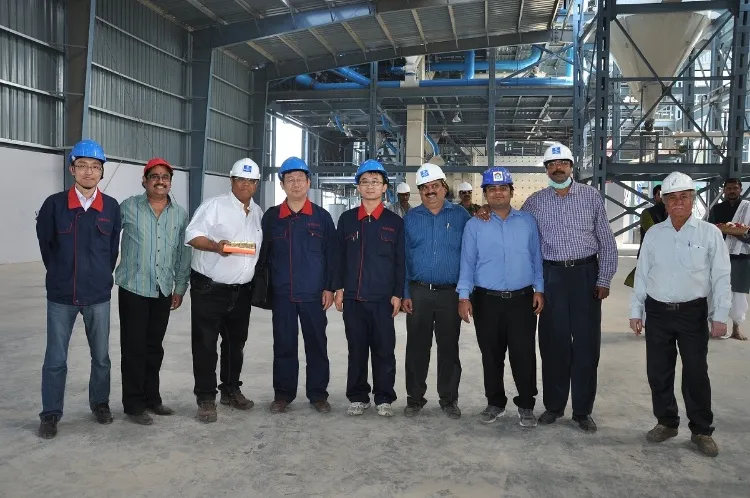
Bubuk Epik, 20+ tahun pengalaman kerja di industri bubuk ultrafine. Secara aktif mempromosikan pengembangan bubuk ultra-fine di masa depan, dengan fokus pada proses penghancuran, penggilingan, pengklasifikasian, dan modifikasi bubuk ultra-fine. Hubungi kami untuk konsultasi gratis dan solusi yang disesuaikan! Tim ahli kami berdedikasi untuk menyediakan produk dan layanan berkualitas tinggi guna memaksimalkan nilai pemrosesan bubuk Anda. Epic Powder—Ahli Pemrosesan Bubuk Tepercaya Anda!
